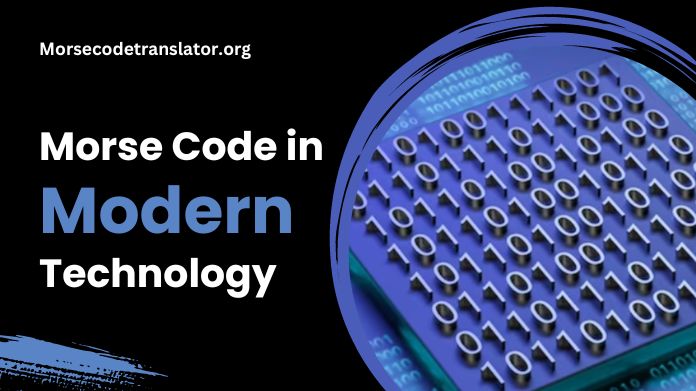In an age dominated by advanced digital communication, Morse code, a communication system developed in the early 19th century, might seem like an antiquated relic of the past. However, Morse Code in modern technology continues to find relevance and utility, surprising many with its adaptability and endurance.
This Morse Code Translator article explores how Morse code persists as a valuable tool in contemporary technology, bridging the gap between the past and the present and Morse Code in modern technology.
From aviation and maritime sectors to amateur radio enthusiasts and emergency responders, Morse code remains a vital means of communication in various fields. Beyond its traditional applications, Morse code has found unexpected uses in modern technology, including encryption methods, assistive technologies for individuals with disabilities, and even as a form of art and expression in digital mediums.
By delving into these innovative applications and exploring Morse code’s enduring significance in the digital age, we can better appreciate this timeless communication system and its continued relevance in today’s technologically driven world.
What is Morse Code?
Morse code transmits textual information as a series of on-off tones, lights, or clicks. It uses a standardized encoding scheme of dots and dashes to represent letters, numbers, and punctuation. Developed by Samuel Morse and Alfred Vail in the early 19th century, Morse code revolutionized long-distance communication, particularly in telegraphy.
In Morse code, each character is represented by a unique combination of short and long signals. Short signals are known as dots, while long signals are called dashes. These combinations form patterns corresponding to specific letters, numbers, or symbols. Morse code can be transmitted using various methods, including sound, light, or mechanical, making it adaptable to different communication mediums.
Despite being over 150 years old, Morse code remains relevant today, especially in emergencies and amateur radio communication. Its simplicity and efficiency make it a valuable skill for communication enthusiasts and professionals, and it inspires new applications in modern technology.
Morse Code in Modern Technology

Despite its age, Morse code continues to find applications in modern technology due to its simplicity, reliability, and efficiency. Here are some ways Morse code is still used in modern technology:
1. Emergency Signaling: Morse code is used in emergencies, such as distress signals sent by ships or aircraft. Its simplicity allows for effective communication when other methods may be unavailable or compromised.
2. Amateur Radio: Morse code remains a key skill for amateur radio operators known as “hams.” Many radio enthusiasts still use Morse code to communicate over long distances, especially in low-bandwidth or challenging conditions.
3. Assistive Technology: Morse code has been adapted for assistive technology devices for individuals with disabilities. For example, it can be used as an input method for communication devices, allowing users to control computers or communicate using switches or other interfaces.
4. Data Transmission: Morse code can be used for data transmission in situations where other forms of communication are not feasible. It has been employed in applications such as underwater communication and space missions, where traditional radio signals may be unreliable.
5. Education and Training: Morse code continues to be taught and used in educational settings, providing a valuable introduction to principles of communication, encoding, and decoding. It is also used in military and emergency response training programs.
Overall, Morse code’s versatility and simplicity make it a valuable tool in various modern technological applications, ensuring its relevance and longevity despite the advent of more advanced communication technologies.
Conclusion
Despite being one of the oldest forms of communication, Morse code maintains its significance in modern technology. Its simplicity, reliability, and versatility have ensured its continued use across various domains.
From emergency signaling to amateur radio operations, assistive technology, data transmission, and education, Morse Code in modern technology finds practical applications in diverse scenarios. Its resilience in adverse conditions, compatibility with low-bandwidth environments, and ease of learning contribute to its enduring relevance.
Morse Code in modern technology continues to adapt and integrate as technology advances into new systems and applications, showcasing its timeless utility and adaptability.
Whether transmitting distress signals at sea, communicating in remote areas, or providing assistive communication for individuals with disabilities, Morse code remains a valuable tool in modern technology.
